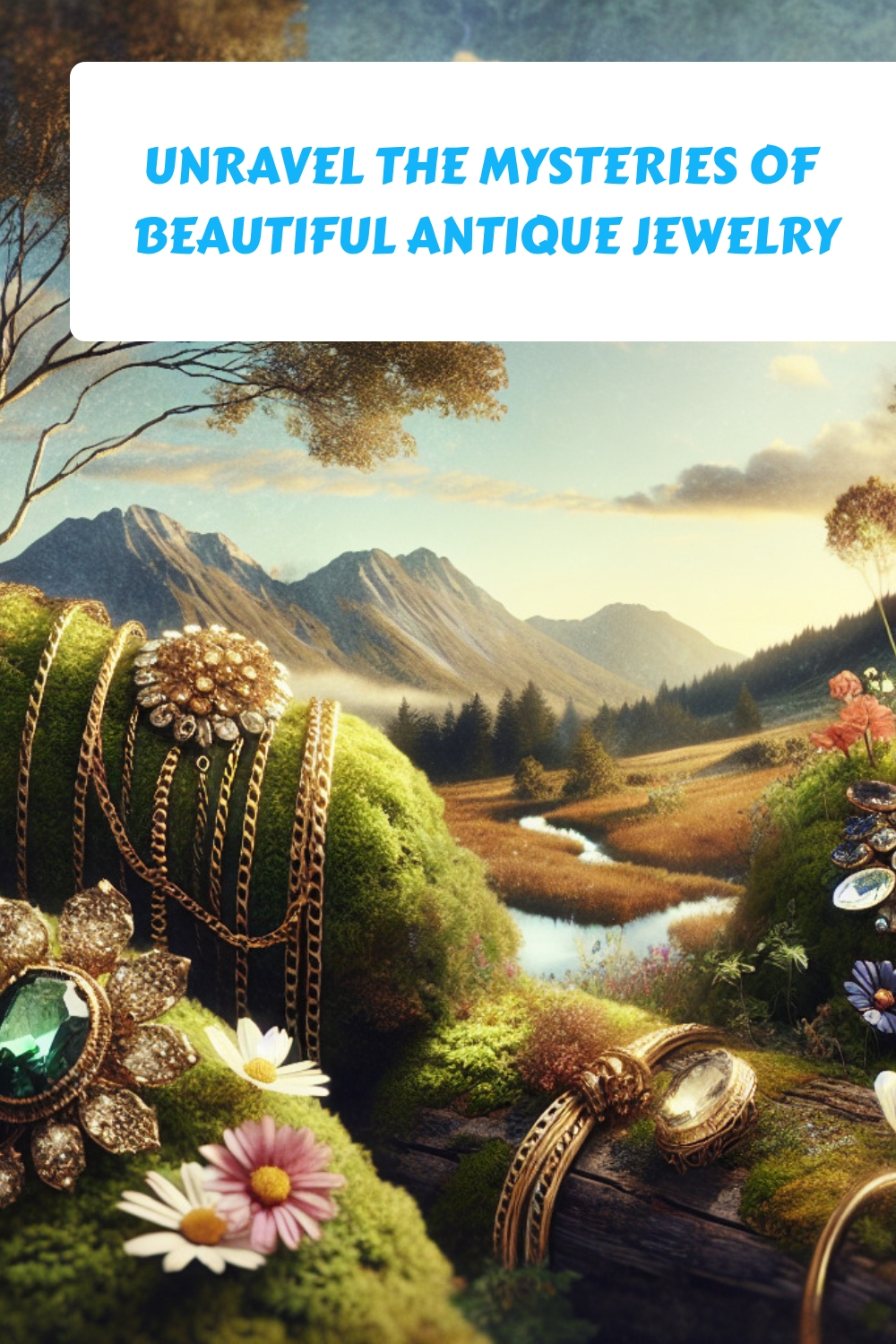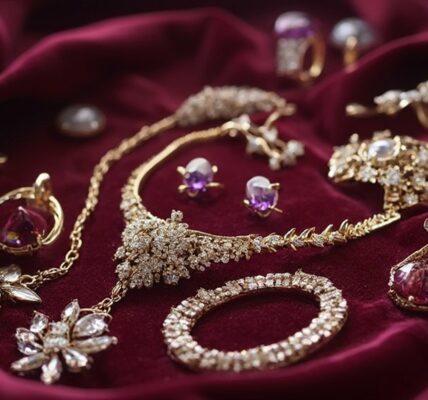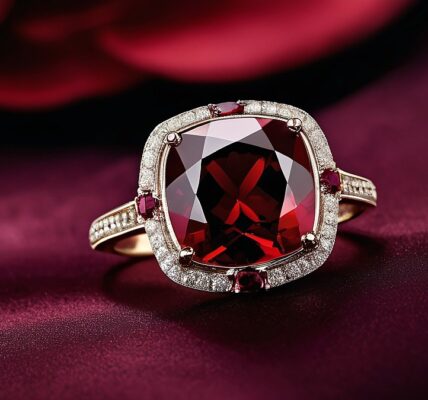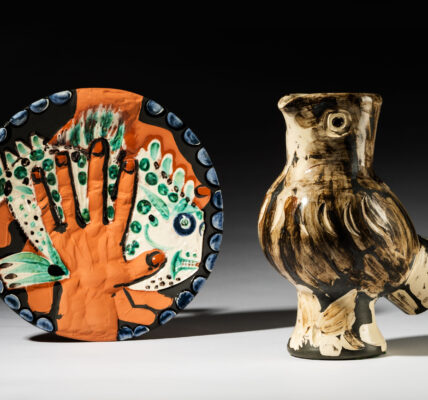Article Contents
- 1 Table of Contents
- 2 The History of Antique Jewelry: Tracing its Origins and Evolution
- 3 Uncovering the Symbolism and Meaning Behind Antique Jewelry Designs
- 4 The Art of Identifying and Authenticating Antique Jewelry
- 5 Exploring the Different Types of Antique Jewelry and Their Characteristics
- 6 Preserving and Caring for Antique Jewelry: Tips and Techniques
Table of Contents
- Introduction
- The History of Antique Jewelry: Tracing its Origins and Evolution
- Uncovering the Symbolism and Meaning Behind Antique Jewelry Designs
- The Art of Identifying and Authenticating Antique Jewelry
- Exploring the Different Types of Antique Jewelry and Their Characteristics
- Preserving and Caring for Antique Jewelry: Tips and Techniques
“Unlock the secrets of the past with our carefully created article about antique jewelry.”
Antique jewelry has long been a fascination for many, with its intricate designs and rich history. From ancient civilizations to modern times, these pieces hold a certain allure that captivates collectors and enthusiasts alike. However, with the passage of time, the true origins and stories behind these treasures have become shrouded in mystery. In recent years, there has been a growing interest in unraveling the mysteries of antique jewelry, delving deeper into its past and uncovering the secrets that lie within. Through careful research and analysis, experts are shedding light on the hidden meanings and cultural significance of these precious adornments, providing a deeper understanding and appreciation for these timeless pieces. Join us as we embark on a journey to unravel the mysteries of antique jewelry and discover the fascinating stories behind these exquisite works of art.
The History of Antique Jewelry: Tracing its Origins and Evolution
Antique jewelry has always held a certain allure and fascination for people. The intricate designs, the use of precious stones and metals, and the stories behind each piece make antique jewelry a treasure to behold. But have you ever wondered about the history of antique jewelry? Where did it all begin and how has it evolved over the years? In this article, we will take a journey through time and unravel the mysteries of antique jewelry. Holiday jewelry and design have been a significant part of antique jewelry history, with special pieces made to commemorate holidays and events. From Victorian-era Christmas brooches to Art Deco-style New Year’s Eve earrings, holiday-themed jewelry has always been a popular choice for gift-giving and special occasions. The designs and styles of holiday jewelry have evolved alongside the changing trends and cultural influences, creating a rich tapestry of tradition and innovation in the world of antique jewelry.
The origins of antique jewelry can be traced back to ancient civilizations such as Egypt, Mesopotamia, and Greece. These civilizations valued jewelry not only for its aesthetic appeal but also for its symbolic and religious significance. In Egypt, jewelry was often worn as a form of protection and to honor their gods. The use of precious stones such as lapis lazuli, turquoise, and carnelian was prevalent in their jewelry, along with gold and silver.
As we move forward in time, we come to the Roman era, where jewelry became a symbol of wealth and status. The Romans were known for their love of luxury and extravagance, and this was reflected in their jewelry. They used a wide variety of gemstones, including diamonds, emeralds, and sapphires, and techniques such as enameling and filigree were introduced.
The Middle Ages saw a shift in the use of jewelry. With the rise of Christianity, jewelry became more modest and was used to display religious symbols. The use of gemstones was also limited to a few, such as pearls and amethysts. However, during the Renaissance period, there was a revival of interest in the classical styles of ancient civilizations, and jewelry once again became more elaborate and ornate.
The 18th and 19th centuries saw a significant change in the world of jewelry. With the discovery of new lands and the increase in trade, exotic gemstones such as rubies, sapphires, and diamonds became more accessible. This led to the creation of intricate and elaborate pieces of jewelry, often adorned with these precious stones. The Industrial Revolution also played a significant role in the evolution of antique jewelry, with the introduction of new techniques and machinery, making jewelry production more efficient.
The Victorian era is considered the golden age of antique jewelry. Queen Victoria’s love for jewelry and her influence on fashion led to the creation of some of the most exquisite and intricate pieces of jewelry. The use of diamonds, pearls, and colored gemstones was prevalent, and techniques such as repoussé and chasing were used to create intricate designs.
The 20th century saw a shift towards more modern and simplistic designs. The Art Nouveau and Art Deco movements brought about a change in the style of jewelry, with a focus on geometric shapes and bold colors. Platinum also became a popular metal for jewelry during this time, as it allowed for more delicate and intricate designs.
Today, antique jewelry continues to hold a special place in the hearts of many. With the rise of vintage and retro fashion, there has been a renewed interest in antique jewelry. People are drawn to these pieces’ unique designs and craftsmanship, which cannot be replicated in modern jewelry.
In conclusion, the history of antique jewelry is a rich and fascinating one. From its humble beginnings in ancient civilizations to its evolution through different eras, antique jewelry has always been a symbol of beauty, wealth, and status. Each piece tells a story and holds a piece of history within it. So the next time you come across a piece of antique jewelry, take a moment to appreciate its journey through time and the mysteries it holds.
Uncovering the Symbolism and Meaning Behind Antique Jewelry Designs
Antique jewelry holds a certain allure and fascination for many people. The intricate designs, the use of precious metals and gemstones, and the rich history behind each piece make them highly sought after by collectors and enthusiasts alike. However, beyond their aesthetic appeal, antique jewelry also holds a deeper meaning and symbolism that adds to their value and significance.
One of the most intriguing aspects of antique jewelry is the symbolism and meaning behind their designs. Each piece is a reflection of the time period in which it was created, and the cultural and societal influences of that era. For example, during the Victorian era, jewelry was often used to convey messages and sentiments that could not be openly expressed in society. This led to the popularization of symbolic motifs such as hearts, flowers, and birds, representing love, beauty, and freedom.
Similarly, during the Art Nouveau movement, jewelry designs were heavily influenced by nature and its elements. The use of flowing lines and organic shapes in jewelry pieces symbolized the desire to break away from traditional and rigid styles, and embrace a more natural and free-flowing way of life. This symbolism can be seen in the famous “dragonfly” brooches and pendants of this era, which represented transformation and change.
Religious and spiritual symbolism also played a significant role in antique jewelry designs. In the Middle Ages, jewelry was often used as a form of protection and to ward off evil spirits. Crosses, amulets, and talismans were popular motifs, and were believed to have mystical powers that could bring good luck and protect the wearer from harm. Similarly, during the Renaissance period, jewelry designs were heavily influenced by Christian symbolism, with pieces featuring images of saints, angels, and biblical scenes.
Aside from religious and cultural symbolism, antique jewelry also holds personal significance and meaning for the wearer. Many pieces were created as sentimental gifts or to commemorate special occasions such as weddings, births, and anniversaries. These pieces often featured personalized engravings or hidden messages, making them even more meaningful and cherished by their owners.
The use of gemstones in antique jewelry also holds a deeper meaning and symbolism. In ancient times, gemstones were believed to possess healing powers and were used for their therapeutic properties. For example, amethyst was believed to ward off drunkenness and promote sobriety, while emeralds were thought to cure eye diseases. This belief in the healing powers of gemstones continued throughout the ages, with different stones being associated with different qualities and virtues. For instance, rubies were believed to represent passion and love, while sapphires were associated with wisdom and truth.
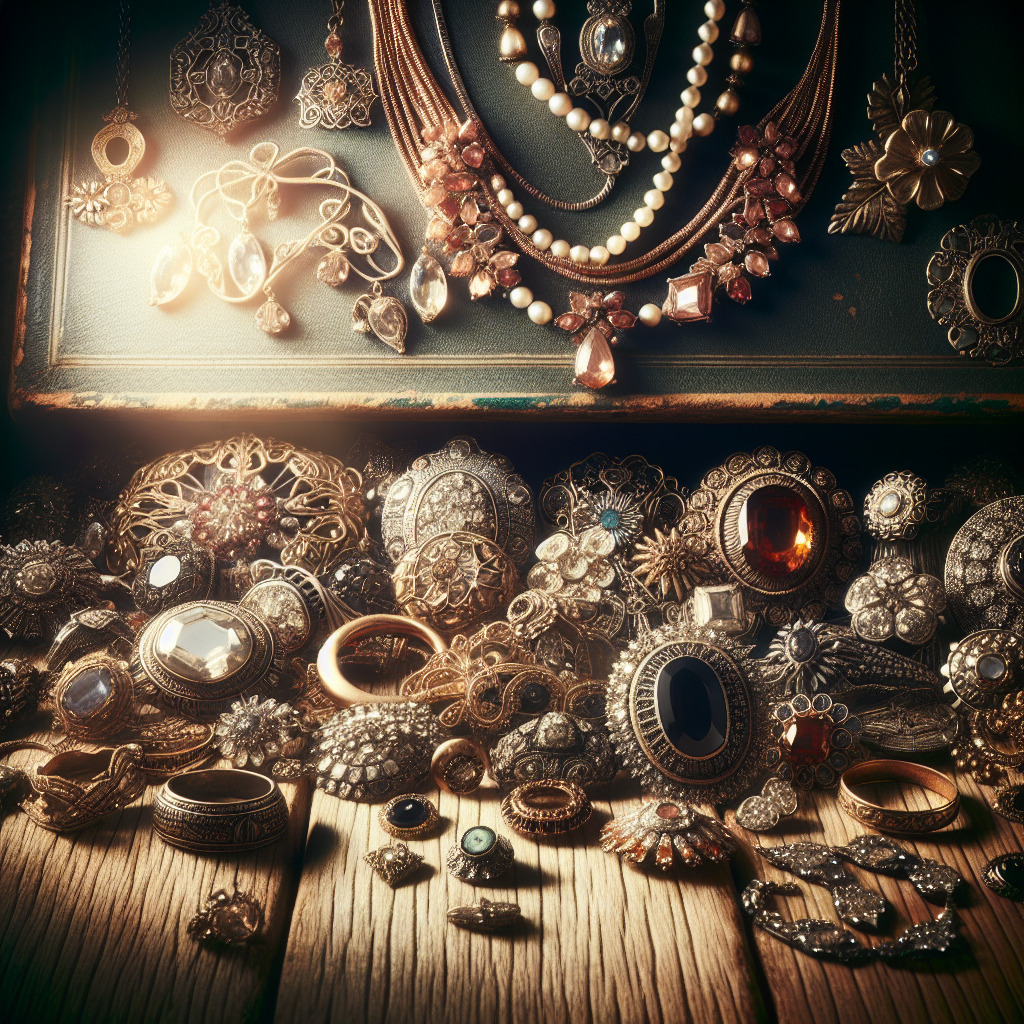
Antique jewelry holds a certain allure and charm that modern pieces simply cannot replicate. Each piece tells a unique story, with its own history and character. However, with the rise of reproductions and fakes in the market, it has become increasingly important to be able to identify and authenticate antique jewelry. In this article, we will delve into the art of identifying and authenticating antique jewelry, unraveling the mysteries behind these precious pieces.
In addition to their symbolism and meaning, antique jewelry also holds historical significance. Each piece is a reflection of the time period in which it was created, and can provide valuable insights into the fashion, culture, and societal norms of that era. For example, jewelry from the Art Deco period is known for its geometric and symmetrical designs, which were influenced by the rise of industrialization and the machine age.
In conclusion, antique jewelry is not just a beautiful accessory, but a reflection of history, culture, and personal significance. The symbolism and meaning behind each piece adds to its value and makes it a treasured possession for many. Whether it’s a family heirloom or a newly acquired piece, antique jewelry continues to fascinate and captivate us with its mysteries and stories waiting to be unraveled.
The Art of Identifying and Authenticating Antique Jewelry
The first step in identifying antique jewelry is to understand the different eras and styles. Antique jewelry is typically categorized into four main eras: Georgian, Victorian, Edwardian, and Art Deco. Each era has its own distinct characteristics and design elements. For example, Georgian jewelry is known for its intricate metalwork and use of precious gemstones, while Victorian jewelry often features romantic and sentimental motifs such as hearts and flowers.
Once you have a basic understanding of the different eras, the next step is to examine the materials and craftsmanship of the piece. Antique jewelry is often made with high-quality materials such as gold, silver, and platinum. These metals were commonly used during the time period in which the piece was created. Additionally, antique jewelry is typically handcrafted, with intricate details and fine workmanship. This is in contrast to modern mass-produced jewelry, which often lacks the same level of detail and craftsmanship.
Another important aspect to consider when identifying antique jewelry is the hallmarks or maker’s marks. These are small stamps or engravings on the piece that indicate the metal content and the maker of the jewelry. These marks can provide valuable information about the authenticity and age of the piece. It is important to note that not all antique jewelry will have hallmarks, as they were not always required by law in the past. However, the presence of hallmarks can help to authenticate a piece.
In addition to hallmarks, antique jewelry may also have other identifying features such as signatures or monograms. These can be found on the back of a piece or on the clasp. These markings can provide clues about the maker or designer of the jewelry, adding to its authenticity and value.
One of the most challenging aspects of identifying antique jewelry is determining the age of the piece. This is where a thorough understanding of the different eras and styles comes into play. However, there are also other factors to consider, such as the condition of the piece and any repairs or alterations that may have been made. For example, a piece of Victorian jewelry with a modern clasp may indicate that it has been altered or repaired.
In addition to identifying antique jewelry, it is also important to authenticate it. This involves verifying the age, materials, and maker of the piece. One way to do this is to consult with a reputable antique jewelry expert or appraiser. They will have the knowledge and expertise to properly examine and authenticate the piece. It is also helpful to do your own research and compare the piece to similar ones from the same era.
In conclusion, identifying and authenticating antique jewelry is a complex and fascinating process. It requires a combination of knowledge, attention to detail, and research. One can unravel the mysteries behind these beautiful and valuable pieces by understanding the different eras, materials, and markings. So the next time you come across an antique jewelry piece, take a closer look and see if you can uncover its unique story and history.
Exploring the Different Types of Antique Jewelry and Their Characteristics
Antique jewelry holds a certain allure and charm that is unmatched by modern pieces. Each piece tells a unique story and carries a rich history that adds to its value and appeal. However, with so many different types of antique jewelry available, it can be overwhelming to understand the characteristics and significance of each one. In this article, we will explore the different types of antique jewelry and unravel the mysteries behind their beauty. From Victorian lockets to Art Deco bracelets, each era brings its own distinctive style and craftsmanship, making antique jewelry a treasure trove for collectors and enthusiasts. As we delve into the past, it’s also fascinating to see how these timeless pieces influence current fashion statements, including the 2024 men’s jewelry trends, which incorporate vintage-inspired elements like signet rings and bold cufflinks. Exploring these connections not only deepens our appreciation for antique designs but also highlights their enduring relevance in modern fashion. Speaking of men’s jewelry trends, recent survey results on men’s jewelry styles have shown a growing interest in vintage and antique-inspired pieces. It seems that more men are drawn to the timeless elegance and craftsmanship of antique jewelry, seeking to add a touch of sophistication to their personal style. This resurgence of interest in vintage designs reflects a deeper appreciation for the history and artistry behind each piece, further solidifying the enduring appeal of antique jewelry in today’s fashion landscape.
One of the most popular types of antique jewelry is Victorian jewelry, which encompasses pieces from the reign of Queen Victoria in the 19th century. This era saw a shift in jewelry design, with a focus on sentimental and romantic pieces. Victorian jewelry is characterized by intricate designs, often featuring flowers, hearts, and other symbols of love. The use of gemstones such as diamonds, pearls, and amethysts was also prevalent during this time. These pieces were often worn as a symbol of love and affection, making them highly sought after by collectors.
Another type of antique jewelry is Art Nouveau, which emerged in the late 19th century and lasted until the early 20th century. This movement was a reaction against the mass-produced, industrialized jewelry of the time. Art Nouveau jewelry is known for its fluid, organic designs inspired by nature. Pieces often feature motifs such as flowers, insects, and animals, and were crafted using materials like enamel, glass, and semi-precious stones. The intricate and delicate designs of Art Nouveau jewelry make them highly desirable among collectors. One of the most famous masters of Art Nouveau jewelry was René Lalique. Lalique’s innovative designs and use of materials like glass and enamel set him apart as a pioneer in the art form. His pieces are highly sought after by collectors, and his legacy as a rene lalique jewelry master continues to influence contemporary jewelry design. Lalique’s unique vision and commitment to craftsmanship have cemented his place as a central figure in the history of Art Nouveau jewelry.
Moving on to the early 20th century, we have Art Deco jewelry, which was popular during the 1920s and 1930s. This style was influenced by the Art Deco movement in architecture and design, characterized by geometric shapes and bold, vibrant colors. Art Deco jewelry is known for its use of diamonds, rubies, and emeralds, often set in platinum. The designs were sleek, modern, and often featured symmetrical patterns. Art Deco jewelry is highly sought after for its bold and glamorous aesthetic.
One of the most intriguing types of antique jewelry is mourning jewelry, which was popular during the Victorian era. These pieces were worn as a way to remember and mourn the loss of a loved one. Mourning jewelry often featured black enamel and was adorned with symbols such as urns, weeping willows, and skulls. These pieces were highly sentimental and were meant to be worn as a reminder of the deceased. Today, mourning jewelry is highly collectible and sought after for its historical significance.
Another type of antique jewelry that holds a special place in the hearts of collectors is Georgian jewelry, which dates back to the 18th and early 19th centuries. These pieces are characterized by their intricate designs and use of precious gemstones such as diamonds, rubies, and emeralds. Georgian jewelry often featured floral and nature-inspired motifs, and the pieces were crafted using techniques such as foiling and closed-back settings. Due to their age and rarity, Georgian jewelry is highly prized by collectors.
In addition to these popular types of antique jewelry, there are also other styles such as Edwardian, Retro, and Mid-Century Modern. Each one has its own unique characteristics and significance, making them all highly desirable among collectors.
In conclusion, antique jewelry is a treasure trove of history, beauty, and craftsmanship. Each type has its own distinct characteristics and tells a story of its time. Whether you are a collector or simply appreciate the beauty of these pieces, exploring the different types of antique jewelry is a fascinating journey that unravels the mysteries behind their allure.
Preserving and Caring for Antique Jewelry: Tips and Techniques
Antique jewelry holds a special place in the hearts of many. It not only represents a piece of history, but also carries sentimental value and unique craftsmanship. However, with age comes fragility, and it is important to properly preserve and care for antique jewelry to ensure its longevity. In this article, we will unravel the mysteries of antique jewelry and provide tips and techniques for preserving and caring for these precious pieces.
The first step in preserving antique jewelry is understanding its materials. Antique jewelry can be made from a variety of materials such as gold, silver, platinum, and gemstones. Each material requires different care techniques, and it is important to know what your piece is made of before attempting to clean or store it.
When it comes to cleaning antique jewelry, the key is to be gentle. Harsh chemicals and abrasive materials can damage the delicate surfaces of antique pieces. Using a soft, lint-free cloth is best to gently wipe away any dirt or debris. A mild soap and water solution can be used for tougher stains, but be sure to rinse and dry the piece thoroughly afterwards.
Another important aspect of preserving antique jewelry is proper storage. Exposure to air and moisture can cause metals to tarnish and gemstones to become dull. It is recommended to store antique jewelry in a cool, dry place, away from direct sunlight. A jewelry box with individual compartments or a soft pouch can help prevent pieces from rubbing against each other and causing damage.
In addition to regular cleaning and storage, a few techniques can be used to further preserve antique jewelry. One method is to use a jewelry sealant, which creates a protective barrier on the surface of the piece. This can help prevent tarnishing and slow down the effects of aging. However, it is important to note that sealants may not be suitable for all types of antique jewelry, so it is best to consult with a professional before using this method.
Another technique for preserving old jewelry is to have it professionally restored. Over time, antique pieces may become damaged or lose their luster. A professional jeweler can carefully repair any damage and restore the piece to its original beauty. It is important to choose a reputable jeweler with experience in working with antique jewelry to ensure the piece is handled with care.
Aside from physical care, it is also important to consider the environment in which antique jewelry is displayed or worn. Extreme temperatures and humidity can cause damage to delicate pieces. It is best to avoid wearing antique jewelry in situations where it may be exposed to harsh elements, such as swimming or gardening. Additionally, it is important to remove antique jewelry before applying lotions, perfumes, or hairspray, as these products can also cause damage.
In conclusion, antique jewelry is a valuable piece of history and a precious and sentimental item. Proper preservation and care are essential to maintaining the beauty and integrity of these pieces. By understanding the materials, using gentle cleaning techniques, and storing and wearing antique jewelry in a suitable environment, we can ensure that these treasures will be enjoyed for generations to come. Remember, when it comes to antique jewelry, a little extra care goes a long way.In conclusion, studying and appreciating antique jewelry is a complex and fascinating field that requires a combination of historical knowledge, technical expertise, and artistic sensibility. By unravelling the mysteries of antique jewelry, we gain a deeper understanding of the past and the people who created these beautiful pieces. Through careful examination and research, we can unlock the secrets of these treasures and preserve them for future generations to admire and cherish. Whether for personal enjoyment or academic pursuit, exploring antique jewelry is a rewarding journey that continues to captivate and intrigue us.

